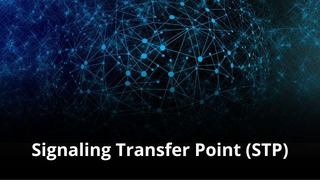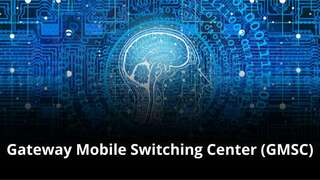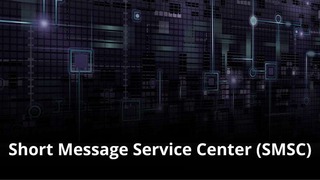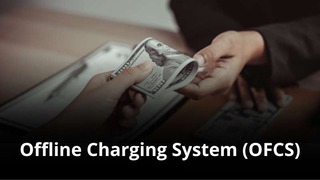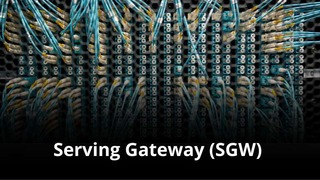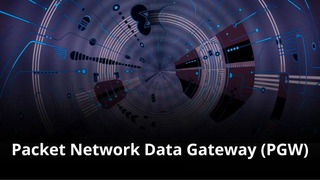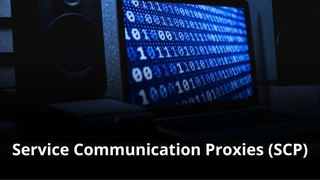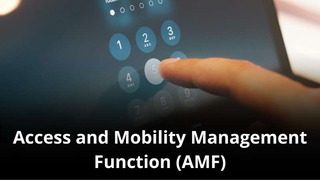Introduction about the Short Message Service Center (SMSC)
The Short Message Service Center (SMSC) is a core, critical network element within the mobile telecommunication ecosystem. Its purpose is to efficiently handle the entire lifecycle of every Short Message Service (SMS) message. This includes the essential tasks of storing, forwarding, converting, and delivering text messages between mobile users and various applications. Understanding the SMSC is fundamental to grasping how the simple, universally relied-upon text message functions.
What are the details of a Short Message Service Center (SMSC)?
- History and Evolution of the Short Message Service Center
- Core Utility and Functionality of the SMSC
- Technical Integration and Data Model
- SMSC Ownership for MVNOs and IoT Companies
- Organizational Impact of SMSC Ownership?
- Redundancy and High Availability
- Impact of 5G and 6G on the SMSC
- Frequently Asked Questions about the SMSC
- Summary
History and Evolution of the Short Message Service Center (SMSC)
The Short Message Service Center (SMSC) was conceived in the late 1980s as a foundational component of the Global System for Mobile Communications (GSM) standard (2G). Its creation allowed for the development of text messaging, an asynchronous communication method separate from voice calls. The initial design of the SMSC focused on the Store and Forward principle, which was necessary because mobile phones were often switched off or out of coverage. As 3G (UMTS) and then 4G (LTE) networks emerged, the SMSC evolved significantly. Modern SMSCs are now highly scalable, intelligent platforms. They not only handle person-to-person (P2P) messages but also the massive volume of application-to-person (A2P) traffic essential for two-factor authentication and business alerts.
Core Utility and Functionality of the SMSC
What is the SMSC Used For?
The Short Message Service Center (SMSC) serves as the central hub for all text message routing and delivery within a network. Its primary function is to guarantee that a message sent by one user reaches the intended recipient, even if the recipient is temporarily unavailable. It plays a vital role in ensuring the high reliability and low failure rate that makes SMS a trusted communication channel. Managing an SMSC is necessary for any mobile operator or service provider that wishes to offer dependable text messaging services.
Key Functions of the Short Message Service Center (SMSC)
Lets investigate the core functions of the Short Message Service Center (SMSC) to understand its critical role in message handling:
- Message Reception: It receives the Mobile-Originated (MO) message from the sender’s mobile network.
- Store and Forward: The SMSC stores messages if the recipient is unavailable and forwards them upon re-availability.
- Recipient Location Query: It queries the Home Location Register (HLR) to find the recipient’s current location (VLR/MSC address).
- Routing: The SMSC determines the most efficient path to deliver the message to the correct network element.
- Protocol Conversion: It translates messages between different network protocols (e.g., MAP over SS7 to SMPP).
- Delivery Attempt Management: It manages multiple delivery attempts according to pre-defined retry policies.
- Delivery Confirmation: The SMSC receives and relays delivery reports back to the original sender.
- Charging/Billing: It generates records necessary for accounting and billing based on message volume and type.
- Message Timestamps/Validity: The center maintains unique timestamps and enforces the message’s defined validity period.
Technical Integration and Data Model
Integration with Other Systems
The Short Message Service Center (SMSC) is a major point of interconnectivity in the mobile core. Examine its key integration points to appreciate its centrality to messaging flows. It connects to the Mobile Switching Center (MSC)/Serving GPRS Support Node (SGSN) to receive messages from and deliver messages to the mobile network. Crucially, the SMSC interfaces with the Home Location Register (HLR)/Home Subscriber Server (HSS) to obtain the recipient’s current location and availability status. For external bulk messaging and application services, it connects to External Short Message Entities (ESMEs) and SMS Gateways, primarily using the Short Message Peer-to-Peer Protocol (SMPP).

Technical Data Model and Key Interfaces
The Short Message Service Center (SMSC) utilizes a dynamic Technical Data Model. This model must efficiently manage a high volume of transient data, namely the messages stored for future delivery. The model is optimized for rapid storage and retrieval of message content, priority, and expiry time. Key interfaces utilized by the SMSC are:
- MAP (Mobile Application Part): This is carried over the Signaling System 7 (SS7) protocol stack and is used for core network signaling with the MSC/VLR and HLR.
- SMPP (Short Message Peer-to-Peer Protocol): This is the industry standard, IP-based protocol used for connecting to external entities like SMS Gateways and bulk messaging platforms.
SMSC Ownership for MVNOs and IoT Companies
Why Own a SMSC?
For a Full or Thick Mobile Virtual Network Operator (MVNO) or an IoT company, owning a dedicated Short Message Service Center (SMSC) is a key element of control. Consider that the SMSC controls the quality and monetization of all messaging traffic. Owning it allows these companies to bypass relying on a host MNO’s often restrictive or expensive messaging platforms. This provides a direct path for service customization and revenue generation from the growing A2P market.
Advantages and Disadvantages of SMSC Ownership
Control Messaging Costs by avoiding the host MNO’s per-message fees.
Monetize A2P Traffic directly from business applications and partners.
Customize SMS Features such as delivery retries and message validity periods.
Enhanced Visibility and Analytics into all messaging traffic and performance.
Improved Quality of Service (QoS) by prioritizing messages like IoT alerts.
High Initial Investment in specialized hardware and licensing fees.
Complexity of Integration with the host MNO’s core network elements.
Operational Burden requiring 24/7 monitoring, suport and expertise in SS7/SMPP.
Security Risks associated with managing an SS7-connected network element.
Scalability Challenges to handle sudden or massive traffic surges (e.g., peak holidays).
Organizational Impact of SMSC Ownership
Analyzing the organizational impact of owning a Short Message Service Center (SMSC) across various business units.
Operational Impact: Requires the establishment of a dedicated messaging operations team. This team must possess deep knowledge of SMPP and SS7 signaling to manage routing, maintenance, and complex troubleshooting. Ensure robust monitoring tools are in place to handle high-volume, real-time message flows.
Financial Impact: Evaluate the high capital expenditure (CapEx) for the SMSC platform, licenses, and initial integration work. There will be ongoing operational expenditure (OpEx) for specialized vendor support, maintenance contracts, and highly skilled staff. Ownership opens a new line of revenue via A2P services.
Commercial Impact: Leverage the SMSC to launch innovative messaging services quickly. This includes offering customized bulk messaging or specialized IoT services. It creates a new revenue stream and enhances the ability to differentiate the service offering.
Technical Impact: Mandates end-to-end responsibility for messaging network security and latency. The company must manage all interconnections and ensure the platform can scale instantly to handle peak message traffic volumes without failure.
Redundancy and High Availability

The Short Message Service Center (SMSC) is a non-stop messaging hub; therefore, Redundancy and High Availability (HA) are absolutely mandatory. Implement a fully redundant, often geo-redundant, architecture with multiple sites to ensure zero message loss and continuous service. Standard practice involves an Active-Active cluster configuration or a robust Active-Standby setup with automatic failover. The system must employ sophisticated data synchronization techniques to ensure all stored messages are immediately replicated to the backup system. Ensure that the transition to the standby unit is instant and transparent to the user in the event of a failure.
Impact of 5G and 6G on the SMSC
5G’s Influence
In the 5G core network, traditional SMS traffic is transitioned to an IP-based delivery mechanism. The function of the Short Message Service Center (SMSC) is evolving into the Short Message Service Function (SMSF) and the IP-SM-Gateway (IP-SM-GW). The SMSF handles signaling for SMS over NAS (Non-Access Stratum) in the 5G core. Adopt modern SMSC gateways that can seamlessly interwork between the legacy SS7/MAP-based systems (for 2G/3G/4G) and the IP-based 5G core elements (SMSF). SMS remains critical for essential services and backward compatibility.
6G’s Vision
As 6G technology emerges, Anticipate the near-complete virtualization and distribution of messaging functions into the cloud-native core. While the core principle of store-and-forward will endure for basic text messages, the functionality will be deeply integrated with rich communication services (RCS) and specialized Machine-to-Machine (M2M) communication protocols. The SMSC’s successor functions will likely become heavily AI-optimized for dynamic traffic management, anti-fraud filtering, and ultra-low latency alerts for IoT devices.
Frequently Asked Questions about the Short Message Service Center (SMSC)
1. What happens if the recipient's phone is off when I send a text?
The SMSC follows its core principle of Store and Forward. It temporarily stores the message and queries the HLR. It will attempt to deliver the message once the recipient’s phone registers back onto the network and is available.
2. What is the significance of the SMSC number on my phone?
The SMSC number, stored on your SIM card, is the routing address. It tells your mobile phone where to send the text message so the message can be processed, stored, and forwarded to the final recipient.
3. What is the difference between P2P and A2P messaging?
P2P (Person-to-Person) refers to texts sent between two mobile subscribers. A2P (Application-to-Person) refers to messages generated by an application (e.g., bank alerts, one-time passwords) and delivered to a subscriber, a major revenue source managed by the SMSC.
4. What protocol is used for connecting external platforms to the SMSC?
External applications and SMS Gateways connect to the SMSC primarily using the Short Message Peer-to-Peer Protocol (SMPP), a flexible, high-throughput protocol designed specifically for SMS traffic.
5. Does SMS traffic still use the SMSC in a 5G network?
Yes, SMS traffic persists in 5G. However, its handling shifts from the legacy SMSC to the SMSF (Short Message Service Function), which is the 5G core network element responsible for SMS functionality.
Summary
The Short Message Service Center (SMSC) is the central intelligence unit for all text messaging in mobile networks, guaranteeing reliable message delivery via its crucial store-and-forward capability. Owning an SMSC is a significant strategic step for MVNOs and IoT companies, granting them essential control over messaging quality, service customization, and direct access to lucrative A2P revenue streams. However, this decision necessitates substantial technical expertise and a high investment in resilient, highly available infrastructure. While its function is evolving into the SMSF in 5G and future networks, the fundamental requirement for a secure, central message delivery manager remains paramount.
